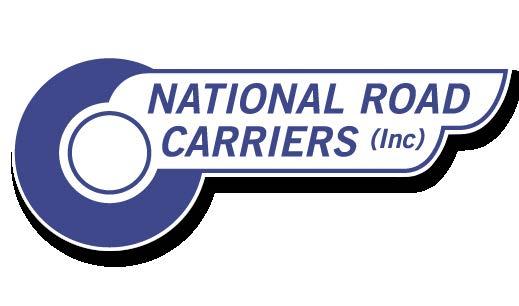
4 minute read
National Road Carriers Association
Congestion charging benefits potentially huge – but let’s check
By David Aitken, CEO of National Road Carriers Association
REPORTS INDICATE CONGESTION WOULD REDUCE BY AROUND
8-12% if road charging is fully implemented and combined with improved public transport.
The potential benefits look to be enormous, contributing significant time-cost savings to freight and other commercial traffic on Auckland’s roads.
But NRC strongly recommends that before a “road pricing” scheme is formally adopted, a trial be undertaken to ensure the potential benefits emerge in practice.
The objectives of the trial would be to: • Reduce peak-hour traffic demand on the selected corridor; • Encourage the use of public transport; and, • Provide for more efficient movement of freight and lower overall travel costs.
Auckland now ranks 47th in the world in terms of traffic congestion. The cost of congestion in Auckland is more than a $1billion per annum. Congestion is spreading across the day, across the network… and is projected to worsen.
If this trial is successful and is fully adopted, it may be something the Government will also look to do in other major transport hubs around the country: Hamilton, Tauranga, Wellington and Christchurch all have congestion issues.
Commuter cars cause the bulk of the congestion, while road freight and trades sectors carry a big proportion of the cost of delay. Operating one heavy truck is approximately $100/hr. A 15-minute delay for say, 4000 trucks a day, costs around $100,000.
Of the five options considered in the Congestion Question report our preference is the Strategic Corridors scheme. This option can be targeted to generate meaningful, Auckland-wide network performance benefits and congestion relief.
In NRC’s submission to Parliament’s Transport and Infrastructure Committee inquiry into congestion pricing in Auckland we recommend the trial be conducted in a corridor or corridors congested with a mix of traffic – single-driver commuters, freight and trades, with reasonable access to practical and convenient public transport and cycling alternatives.
Our submission recommends: • The proposed peak congestion charge of $3.50 be re-examined, noting public transport costs are higher – a two-zone bus fare is $3.55, and freight vehicles are already paying RUC and/or RFT • A pricing structure of up to $5-$7 per peak-hour motorists’ trip, with a daily cap of $10-$12, coupled with reduced peak-hour fares on public transport, to say $2 per trip • A simple, universal congestion charge for all vehicles (similar to the 15% GST on all goods), because the scheme’s efficiency would be improved and compliance costs reduced if different cost structures for certain types of vehicles are avoided. • Freight, distribution and trades pay no fee or a flat rate, because they have no option but to use the roads
If the trial corridor scheme is a success, we recommend a phased delivery of a comprehensive strategic corridor scheme across the Auckland transport network, targeting the most congested routes and timed with improvements to public transport services. The ultimate scheme must explicitly provide for efficient movement of freight and deliver lower overall travel costs.
Lower congestion will not only help to reduce the economic costs of freight, it will also benefit the environment and climate change by substantially reducing carbon emissions from trucks stuck in single-occupancy, private, light-vehicle traffic – and by providing more carbon efficient freight movement.
The amount of freight moving around Auckland is eye-opening: The New Zealand Transport Agency estimates 50 million tonnes of road freight currently originates in Auckland (which is growing by about 6% a year) – 80% of which remains within the Auckland region, 1% being moved north and the remaining 19% being moved south.
Reducing road transport’s impact on climate change is a major focus for National Road Carriers and we engage with the Sustainable Business Council, which in April launched its Low Carbon Freight Pathway.
The pathway is a collaboration by a group of leading businesses that sets out how NZ’s heavy transport sector can be decarbonised by 2050 through the uptake of a range of solutions over time.
The overall pathway can be summarised into three horizons: • Fleet optimisation and modal shift. Ensuring the current fleet is operating efficiently. • Using biofuels in existing vehicle stock with biofuels to minimise emissions. • Electrification of transport, primarily through battery storage and hydrogen.
The pathway drills down to specific pathways for road, rail and coastal shipping. The pathway has 15 specific road initiatives including driver training, route optimisation, widening delivery windows, anti-idling technology, weight reduction, improved aerodynamics, increased carrying capacity by using larger trucks… and more.
Well-tested measures to reduce congestion will have positive effects all around for commuters, the transport industry, consumers of goods carried by trucks and for future generations, by improving air quality and limiting the impact of climate change. T&D

David Aitken







